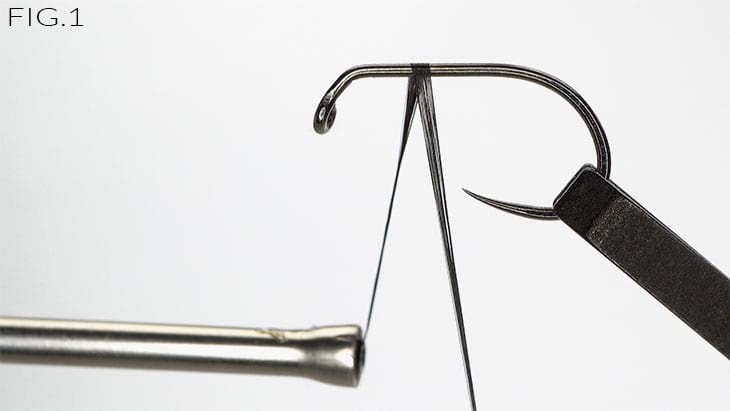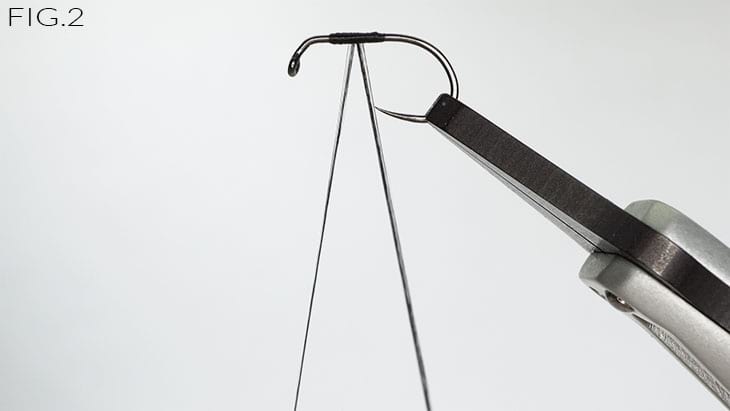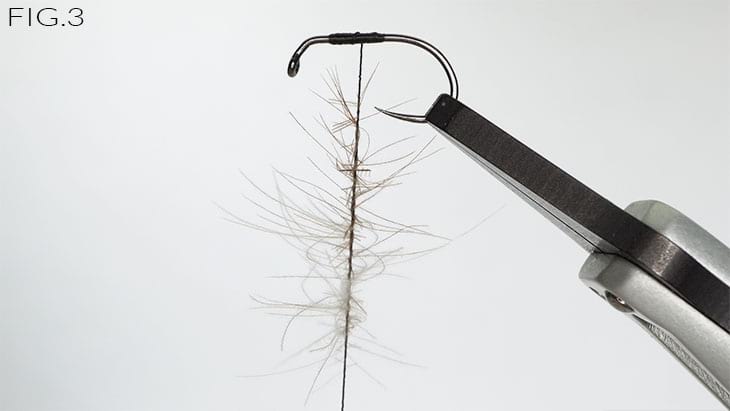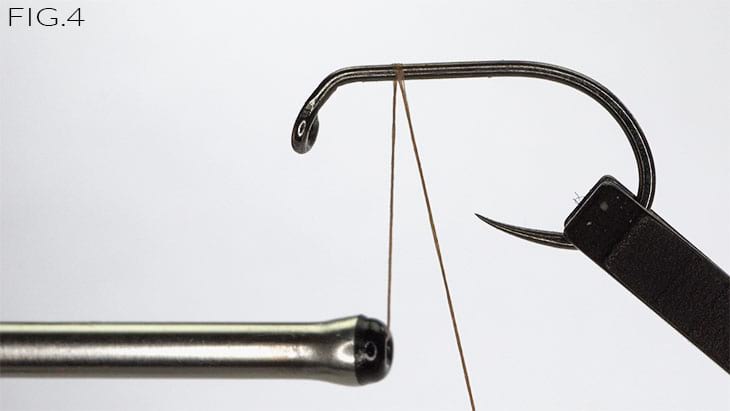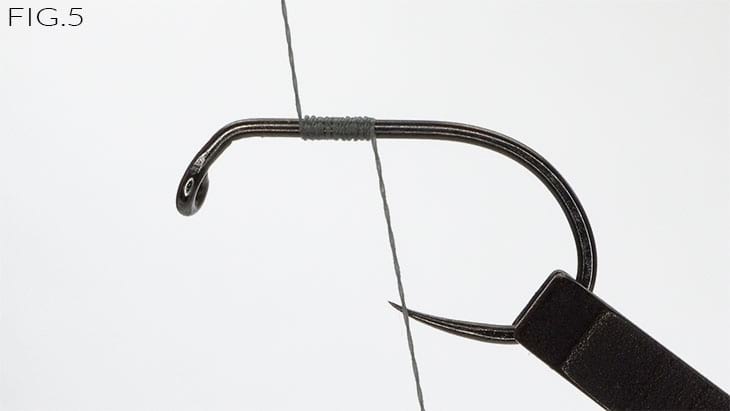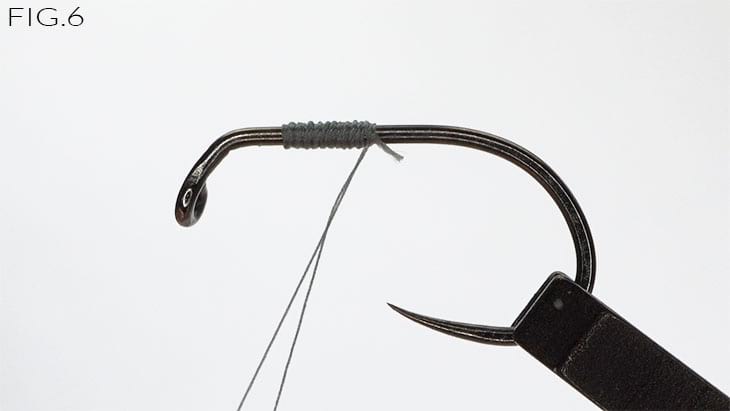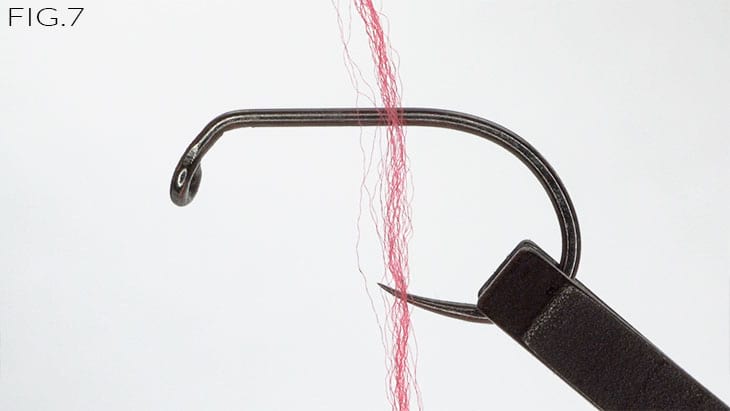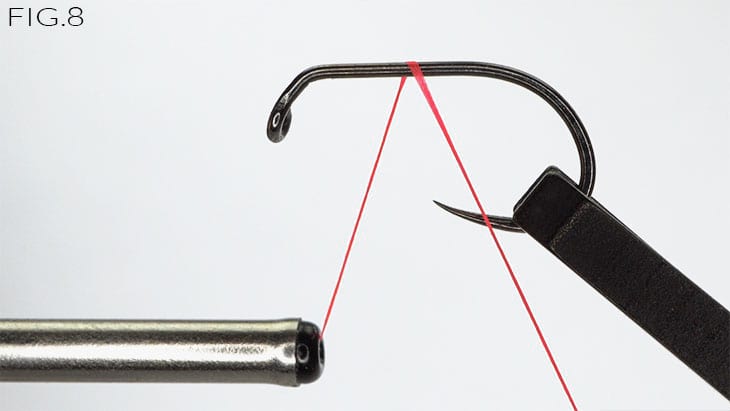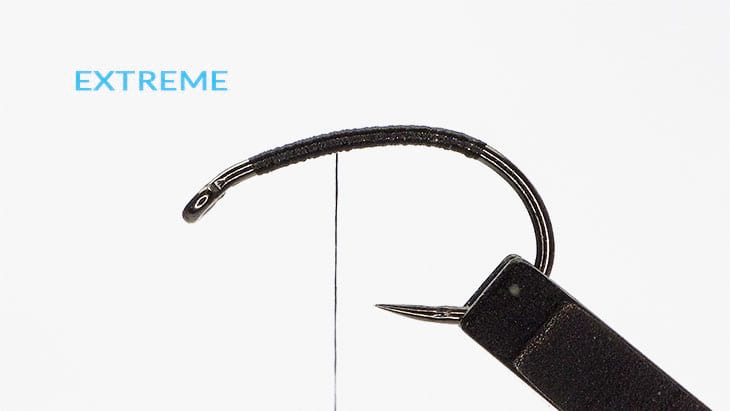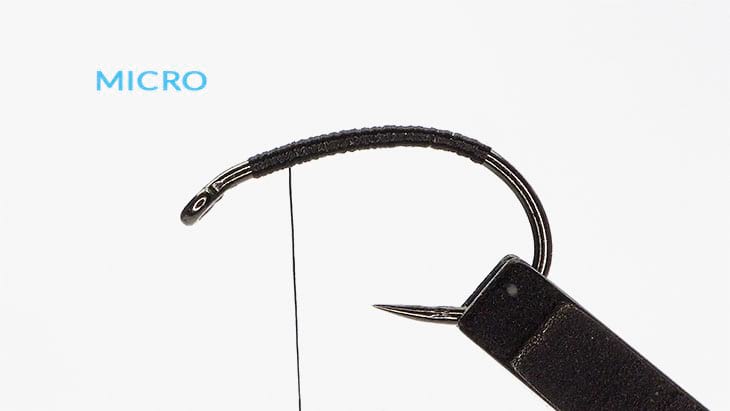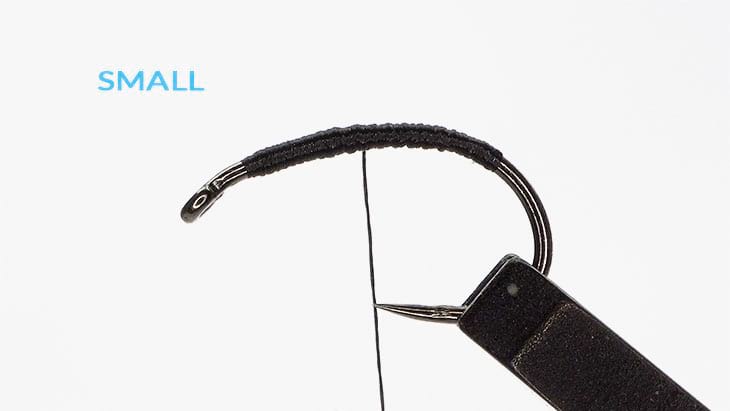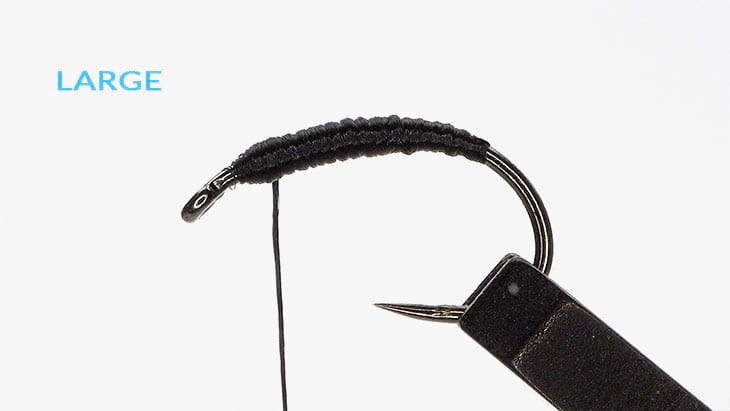Fly tying threads
Simply and securely attaching fly tying material to the hook
FLY TYING THREAD
The fly tying thread is the essential starting point for artificial flies. Although it is possible to tie dressings without a hook, as is the case with tube flies for example, it is almost impossible to do without the thread. The tying thread is wrapped around the shank of the hook and is mainly used to tie the fly tying material that will later form your dressing. Some artificial flies are made almost entirely with thread, which transforms from a simple material tying agent into the main material.
Knowing how to handle and manipulate the fly tying thread in the correct way is essential for satisfactory results. There are an infinite number of techniques and tricks to be learned, but perhaps we will go into them in more detail in a dedicated article. For the moment we would just like to give you some advice to help you choose the right thread.
There are many different threads on the market and choosing the right one can be quite complicated, especially if you are a beginner. Each thread, in fact, has very different characteristics and lends itself to specific uses. Tying an artificial fly with the wrong thread could be not only annoying but also counterproductive.
To help you understand which fly tying thread is best suited to your needs, we have created this small guide to help you get off on the right foot.
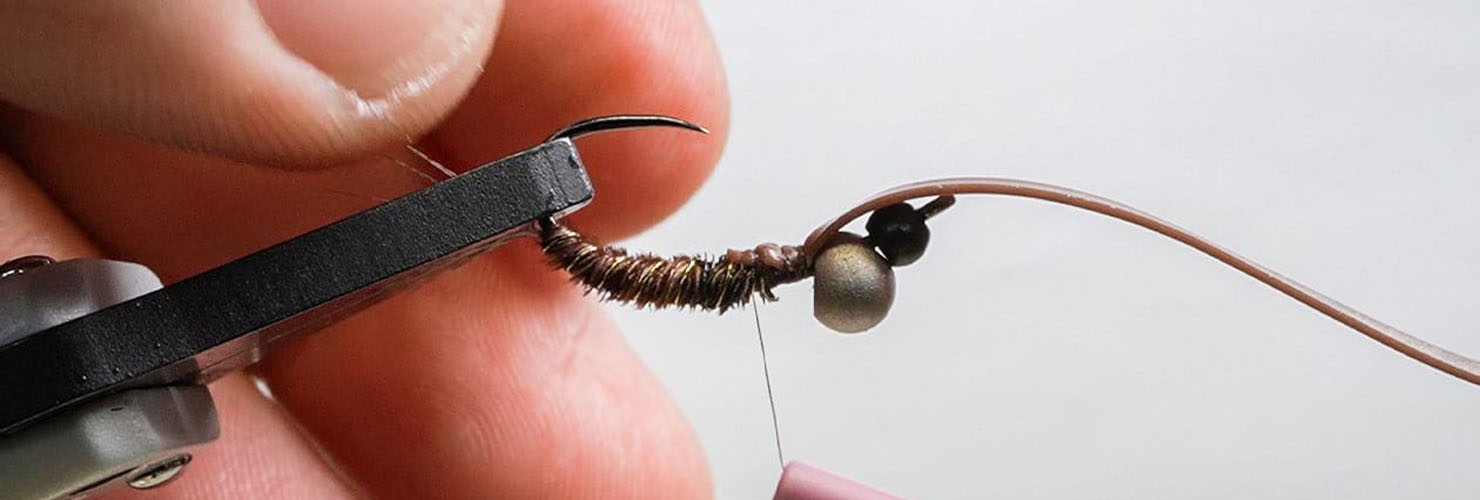
1) TYING THREAD STRUCTURE
The first distinction we have to make lies in the structure of the thread. Although they may all look the same at a glance, fly tying threads have 5 different structures:
- Flat thread
- Bonded thread
- Twisted thread
- 2-strand twisted thread
- Textured thread (floss)
a) Flat thread:
Flat thread is made up of a multitude of very thin micro filaments placed side by side, there are very few twists on this wire, only a few per metre. If you try to rub the end of a flat thread with your fingers you will be able to fray and separate these micro filaments.
It is called "flat thread" because during the winding process on the hook, its tiny fibres will be arranged parallel to each other, flattening out (FIGURE 1). If you want to create bodies with perfect silhouettes, flat tying thread is definitely a good choice because each coils will lie perfectly on top of the previous one. With the flat tying thread you will be able to easily create smooth bodies with a very realistic gradual taper.
Although there are very thin flat threads available on the market with a staggering breaking strength, it must be emphasised that this type of thread is rather delicate. The micro filaments are arranged in parallel without twisting and therefore run the risk of fraying. This is the case, for example, if you do not use a bobbin with a ceramic head or if you touch the tip of the hook during winding. If the fingertips are a little rough, they also tend to fray. This kind of problem can be avoided by paying a little attention during fly tying.
The flat thread can also be used for split thread technique. All you have to do is divide the thread fibres into two parts (FIG. 2), using a needle, and then insert dubbing, feathers or any animal hair inside them and wind it onto the hook (FIG. 3). Keep in mind, however, that while you tie the artificial fly and wrap the thread on the hook, it will tend to twist. Therefore, before splitting the thread into two parts with the needle, we advise you to discharge part of this twist by rotating the bobbin in the opposite direction to realign the fibres of the thread.
Below we show you a fly tying video tutorial in which the thread has been doubled, but you can do the exact same dressing by dividing the thread into 2 parts as we have just seen.
The entire POWER THREAD series from Textreme and NANO SILK from Semperfli are flat threads. Among these products you will find the thinnest thread in the world, with an impressive breaking strength, such as the revolutionary 50/0 - DEN. 10 from Textreme.
The twisting of the thread is very important and is not done at random, at least not by serious producers. Just think that Textreme, one of the most renowned companies in the sector, optimises flat thread by applying numbered twists according to the thickness of the thread. As Gilberto Alberti, the owner of the Italian company, told us, it often takes many months of testing to find the right amount of twist.
b) Bonded thread:
Bonderized thread is essentially a flat thread, the only difference being that its microfilaments are glued together. This process has many advantages, such as the resistance to fraying, which is comparable to that of a twisted thread.
Since all microfilaments are bonded, the shape of a bonded thread is much rounder than that of a flat thread. Despite this aspect, the end result does not change because the bonded thread also flattens out very well on the hook during the winding process. As you can see from the 2 descriptive videos, the bonded thread keeps its filaments very close together, whereas the flat thread tends to open up at certain stages of the winding process.
The microfilaments can be separated, so that the split thread technique can also be used with this thread. As with flat thread, bonded thread tends to twist during assembly and it is a good idea to relieve this twist by rotating the bobbin in the opposite direction in order to better split the microfilaments.
This type of thread is certainly one of the most widely used, and is particularly suitable for beginners because it is versatile and easy to use. The entire Textreme STANDARD series is made with flat bonded threads and with its 3 thicknesses you can effectively make most of the dressings available.
c) Twisted thread:
The twisted thread shares the same structure as the flat thread, i.e. it is also composed of a multitude of microfilaments. The difference lies in the twists per metre, which are much more numerous than with flat thread, which is why it has a rounded shape. This profile makes it much more resistant to fraying during fly tying, because the twist keeps all its micro filaments together.
Although it is a twisted thread, it is still possible to split it in 2 with a needle to make the split thread tecnique, only it will let itself be split by fairly short lengths. You will be able to separate the filaments until the natural twist of the thread prevents the needle from sliding between the fibres. In most cases you will still be able to split it for a length sufficient for your purpose. You can assist in this process by turning the bobbin in the opposite direction to the twisting of the thread, this will realign the microfilaments making it easier to separate them.
d) Double twisted thread:
The basic composition of the double twisted thread is essentially identical to the flat and twisted thread, so here too we will find our now famous microfilaments, but thanks to a double twist this thread is really very resistant, both to fraying and breaking. In practice, to make a double twisted thread, 2 twisted thread are taken and twisted together like a rope.
This type of thread, as we have already mentioned, is extremely resistant but pays for this in terms of thickness. For this reason it is only suitable for particular dressing, such as large streamers. During winding on the hook, the double twisted thread will not suffer any flattening, its coils will remain compact and will be arranged side by side (FIG. 5).
If you take a double twisted thread and rotate it with your fingertips in the opposite direction to its braiding, you will succeed in dividing it in 2, separating in fact the 2 twisted threads used for its realisation (FIG. 6). If you wish, it is possible to insert between the two threads some fly tying material such as dubbing or hairs in order to carry out a split thread tecnique.
Here is a dressing made with this type of thread, as you can see it lends itself very well to tying quite large artificial flies.
(e) Textured thread (floss):
Texturised thread, perhaps better known as floss thread, is also basically a flat thread but undergoes a special process, which is called texturisation. It is as if the microfilaments were " cottoned ", giving the thread a fluffy and rounded appearance (FIG. 7), which flattens out very well when it is put under tension to wind it on the hook (FIG. 8).
With this thread you will be able to make smooth bodies with a very realistic gradual taper because, as with flat thread, also with floss thread the coils will lie perfectly on top of each other. Some artificial flies are tied almost exclusively with floss thread, which is used for both the body and the rib.
Textured thread or floss is not only vaporous but also slightly elastic and very soft. This allows you to tie delicate fly tying materials on the hook without the risk of cutting them. Squirmy or foam, if tied to the hook with modern thin flat thread, could cut during the winding process. This can be avoided by using a large floss thread, at least 210 denier.
There are also micro floss with a size of 110 denier, below which the floss would no longer make sense, and they are particularly suitable for making very attractive coloured heads even in very small artificial flies such as chironomas.
In our online fly fishing shop you will find Textreme's FLOSS and MICRO FLOSS threads, in 210 and 110 denier respectively.
Here are a couple of examples of how we have used floss thread:
2) THREAD COMPOSITION
For a long time silk was the main material with which flies were tied, but with the introduction of synthetic fibres into the textile world, such as nylon and various synthetic polymers, the thread composition for fly tying has also changed.
The materials used for tying threads are varied:
- Silk
- Nylon and various synthetic polymers
- Kevlar
- GSP (Gel-Spun Polyethylene)
Not all companies openly declare what type of material they use for their threads and I believe that going into the specifics of the compositions of the various synthetic polymers can only create more confusion, as well as being quite boring.
Remaining within the sphere of fly tying for torrent fishing, we can say that the most commonly used threads are made from synthetic polymers, such as polyester or polyethylene. The fly tying threads you will find in our online fly fishing shop, STANDARD THREAD, POWER THREAD and NANO SILK, are all made from synthetic polymers.
The use of these special synthetic polymers has made it possible to create extremely thin threads with a breaking strength that was unimaginable just a few years ago. The thinnest wire in the world today, and one that will remain the benchmark for many years to come, is Textreme's POWER THREAD 50/0 - den. 10.
In order to successfully cut this type of tying thread, it must first be tensioned, and instead of using scissors in the traditional way, the blade must be slid across, like a knife. Alternatively, a cutter can be used.
Although synthetic polymers have occupied an important part of the market of tying threads, silk has not been completely replaced. Although it is certainly less widely used than in the past, it is mainly used to tie classic flies.
3) THICKNESS INDICATIONS, LET'S BE CLEAR!
There are two abbreviations which are used to indicate to the buyer the thickness of the fly tying thread and paradoxically the lesser known one is also the more precise. But let's take a step back.
It is not clear when and how the XX/0 measurement was born, but roughly speaking we can say that it is the result of an ancient calculation system used by the textile companies of the past to determine the thickness of silk and cotton.
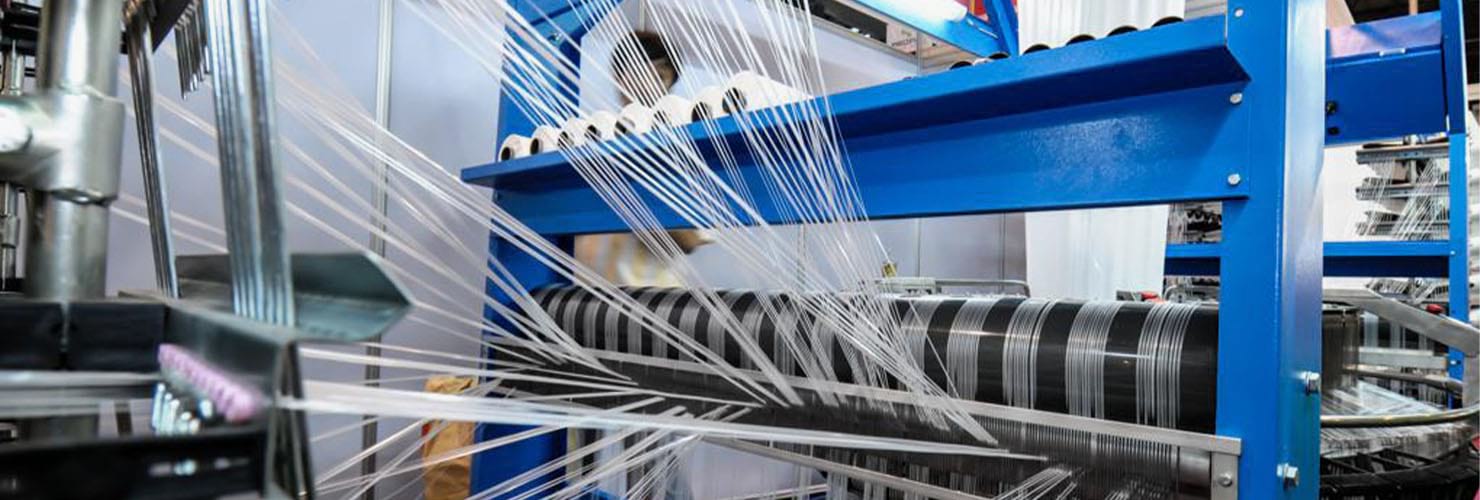
The same system was also adopted by the companies that produced thread for fly tying, creating a lot of confusion over the years. In fact, this measuring system is ambiguous because it is not based on an univocal measuring criterion. In other words, the various companies can interpret the XX/0 measurement as they wish, with the result that the end buyer will find himself holding threads which share the same XX/0 wording but which may in fact have a very different thickness.
Relying on the XX/0 measurement could only make sense in years gone by, when there were only a few companies producing thread for fly tying and they all respected the empirical proportions dictated by the companies that first used this measurement. So whoever produced a 12/0 thread made sure it was thinner than an existing 8/0.
One of the very first companies to use the XX/0 measurement system was UNI, and it is correct to take it as a reference when relying on the empirical XX/0 measurement.
With the arrival of many other thread producers, the fine balance that made sense of the XX/0 measurement was finally broken. In fact some companies, in order to get a slice of this market, pretended to produce very thin thread with very high breaking strengths, passing off 8/0 thread as 12/0. You might say that this was a scam, but it wasn't. Even if, in a certain sense, the end consumer was being cheated. Legally, everything was in order, because, as I said before, the XX/0 measurement was not and still is not subject to any unambiguous parameters.
In order to get out of this labyrinth of approximations, a lesser-known but much more pragmatic measuring system comes to the rescue: the Denier system.
Denier is a measurement system that leaves no room for fancy interpretations and is used by textile companies to scientifically determine the thickness of a thread. Often, but not always, you will find on the labels of thread for fly tying the words DEN. 110 or DEN. 220, where DEN. stands for Denier and the number that follows indicates the weight in grams of 9000 linear metres of thread. Let's take an example:
DEN. 110: Means that 9000 running metres of this thread weigh 110 grams.
DEN. 220: Means that 9000 running metres of this thread weigh 220 grams.
There is a 5% tolerance when measuring with the Denier scale, so a Denier 110 could be a Denier 107 or a Denier 113. However, in order to have a variation in thickness perceptible in a significant way by the fly tiers, the Denier value should vary by at least 25/30%.
In the light of this fact it is clear that a high denier number corresponds to a thick thread and vice versa. It is difficult to break away from the old measuring system, as many fly tiers are familiar with the XX/0 measurement. For this reason we have created a comparison, logically approximate, between XX/0 and Denier, using one of the most prestigious companies in the industry, Textreme, as a reference.
Comparison with Textreme standard thread:
- 8/0 - DEN. 72
- 6/0 - DEN. 110
- 3/0 - DEN.135
Comparison with Power Thread Textreme:
- 2/0 - DEN. 150
- 7/0 - DEN. 100
- 12/0 - DEN. 50
- 24/0 - DEN. 25
- 50/0 - DEN. 10
4) WHICH COLOUR TO CHOOSE?
The colour of the thread is certainly important, but it is more relative than you might think. With a white or neutral-coloured thread such as grey you can tie most of the artificial flies you see around, also taking into account the fact that a white thread can easily be coloured with a felt-tip pen. In this way you can turn a white thread into a black thread, for example before making the closing knot.
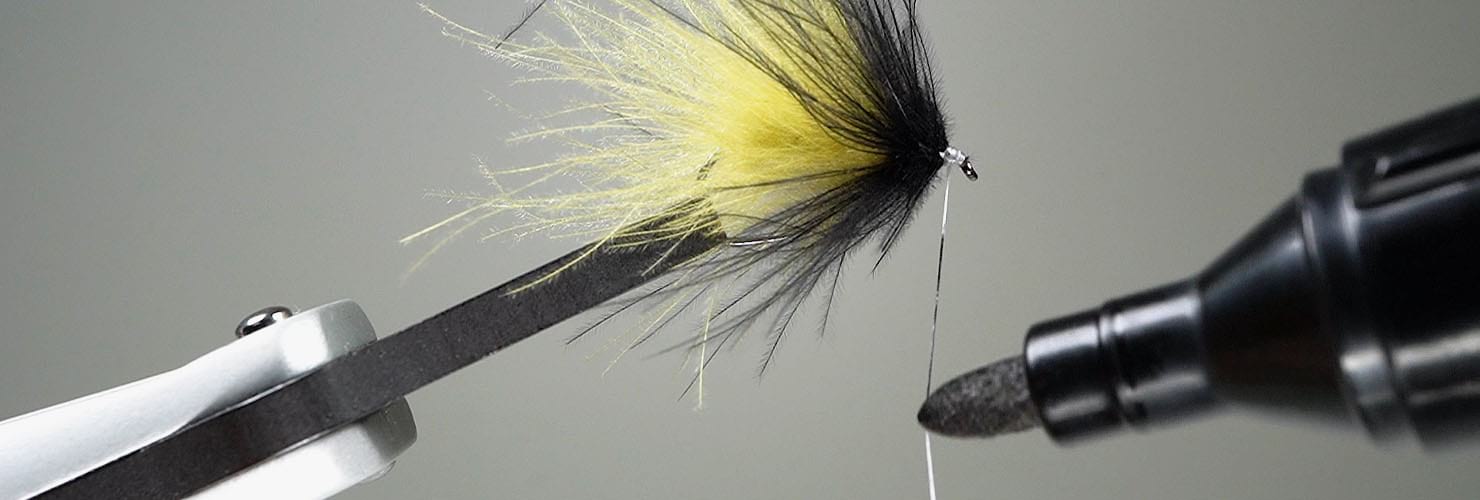
This said, there are also situations and dressings which require a specific colour, especially when the body of the artificial fly is made entirely with tying thread. Generally, if you want to do things properly, the colour of the thread should match that of the fly tying material, so it is not advisable to use a black thread to tie white dubbing.
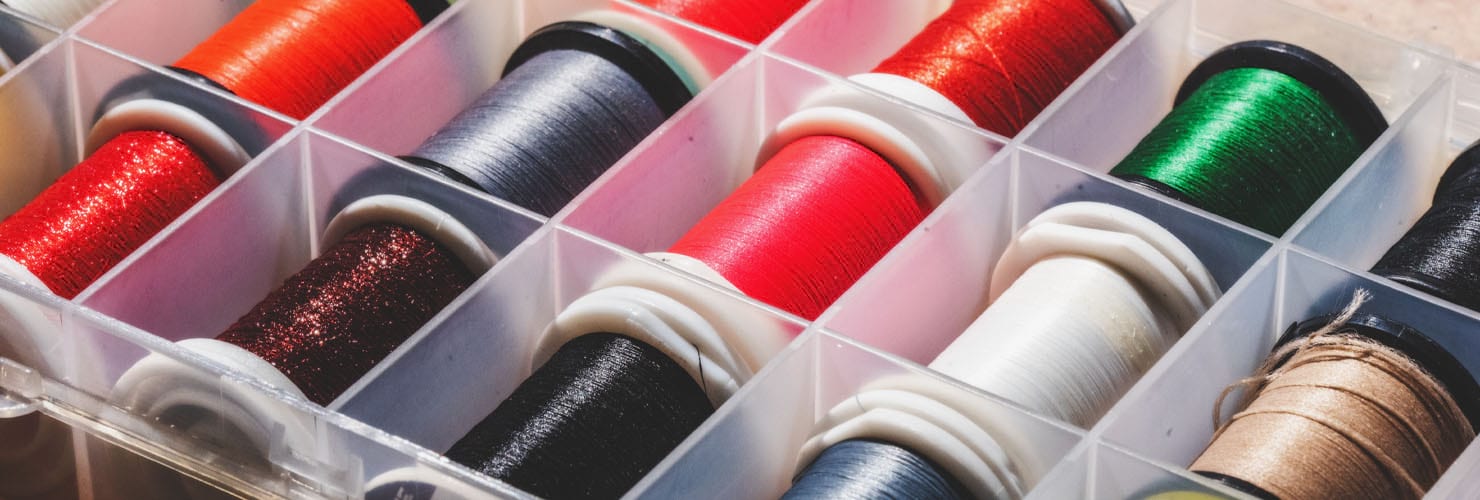
If you don't need to use a medium/large thread to create thickness, you can rely on the extra thin sizes of Semperfli and Textreme. A 24/0 den. 20 grey thread will be practically invisible for the vast majority of its uses.
If you take a look at our fly tying tutorials, we have almost always used a grey 24/0 den. 20 thread.
5) WHAT THICKNESS TO CHOOSE?
Choosing the right thickness of thread is very important, more so than the colour! The choice depends on the type of artificial fly you want to tie, what you want to do with the thread and what kind of fly tying material you want to tie to the hook.
If you want to make medium or large fly bodies, you will have to use a flat thread that is thick enough to create perfect silhouettes with just a few coils of thread. For this purpose, we recommend Textreme POWER THREAD LARGE 2/0 den. 150. If you want to make small or medium fly bodies, POWER THREAD MEDIUM 7/0 denier 100 or STANDARD THREAD 8/0 denier 72 will suffice. To tie the bodies of your artificial flies, Textreme's FLOSS and MICRO FLOSS thread are also a very good alternative.
If you don't need to create thickness with your fly tying thread, you can also rely on very thin sizes, up to 50/0 den. 10. A thread of this size allows you to tie the various fly tying materials without a few extra wraps creating too much thickness, ruining the profile of the fly.
Another advantage of using such thin threads is that they are practically invisible. Remember, however, that such thin wires tend to cut through the most delicate fly tying materials.
Today, the thinnest thread in the world is Textreme's 50/0 den.10, and with this size you can make artificial flies on very microscopic hooks.
If you have to tie delicate fly tying material, such as foam, squirmy worms or deer hair, we recommend a FLOSS or MICRO FLOSS thread, which is generously sized and thanks to its special treatment is soft and slightly elastic, making it particularly suitable for this type of situation.
To give you an idea of the size of the various threads, in the pictures below we show you all the sizes of the Textreme Power Thread series. For each size we have made 100 wraps on a #14 hook:
- Extreme 10 den. 50/0
- Micro 25 den. 25/0
- Small 50 den. 12/0
- Medium 100 den. 7/0
- Large 150 den. 2/0
Advice for beginners:
If you are new to the world of fly tying and don't know which thread to start with, we personally recommend a STANDARD THREAD from Textreme in size 6/0 den. 110, with which you will be able to get away with many different dressings. Thanks to its structure and thickness, this thread is very versatile and easy to use.

















